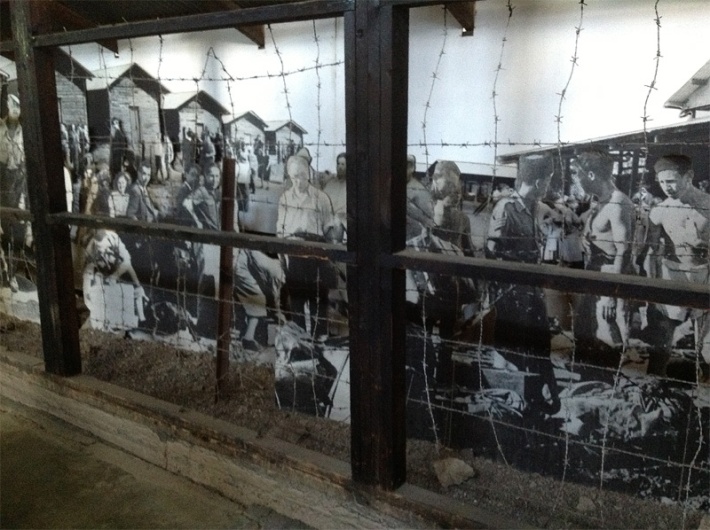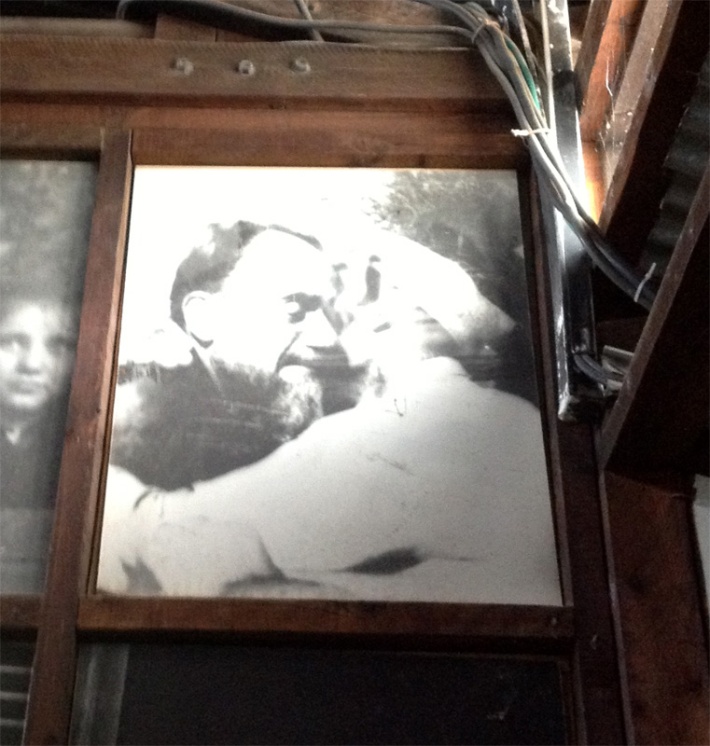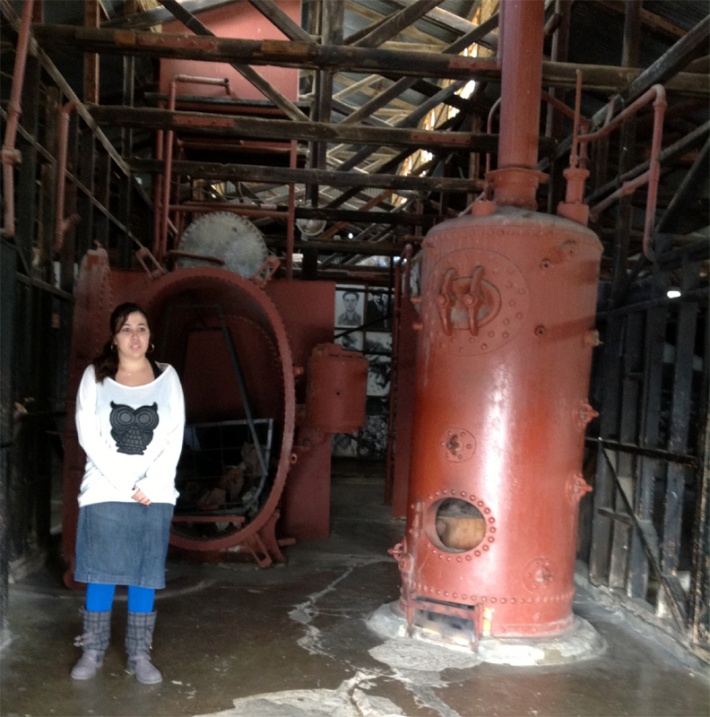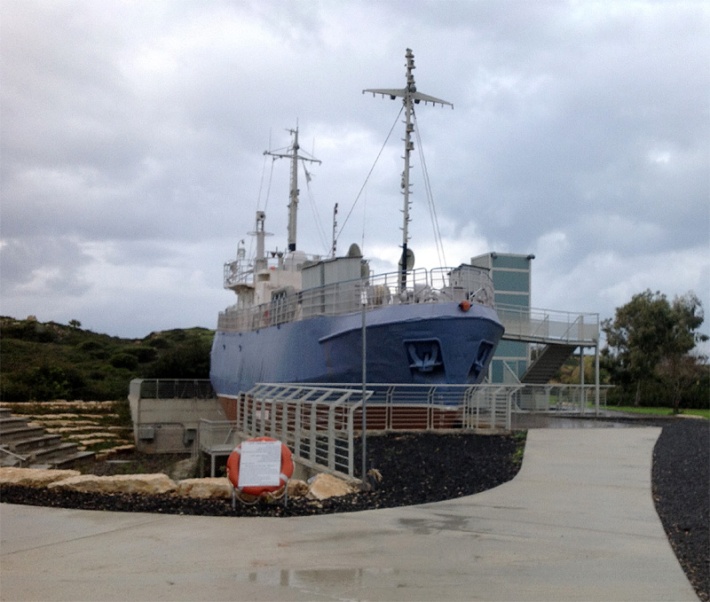I am back in the States, but will be writing about my experiences on this last trip to Israel for a while. One of my last excursions was to Atlit, a beautiful town on the Mediterranean, south of Haifa.
My friend Ruchel and I met at the train station as we came from opposite directions. We had no idea how to get to the Atlit Detention Camp but after questioning a few residents, Ruchel talked one of them into driving us there. Surprisingly, after the tour, which took over two hours, an employee there offered to drive us back into town and dropped us off minutes from the train station at Ben Ezra restaurant where we had a very appetizing salmon lunch accompanied by about 10 salads.
Now for the serious side of this trip: Jews who had foresight in 1935 were anxious to flee Europe. Jews in 1946, who survived the Holocaust, did not want to go back to their homes where the smell of the burning flesh of their families was still fresh in their nostrils. And the Jews during the Holocaust who were able to cross borders, escape the Nazis, and get on a ship, were determined to leave whether or not Britain gave them permission. The British, who had promised the Jews Palestine for fighting in World War I, suddenly back tracked and decided to allow only about 7,000 Jews a year into Palestine. Everyone else was declared an illegal.
This created an explosive situation. Especially for the Jews whose very life depended on getting out of Europe. Once on the seas they risked German ships blowing them out of the water, or English ships making them turn around even though they knew they would be returning to a place where they would certainly be murdered; unfortunately just as the S.S. St. Louis was refused entry by everyone, including the U.S., and 1000 Jews were returned to Europe to be fed to the gas chambers.
Those Jews who did make it to Palestine were interred at the Atlit Detention Camp.
I shuddered when I saw the showers that new detainees were told to strip and get into. Many of them had traveled in overcrowded ships and had not bathed for weeks and were infested by lice. However, they did not understand what the British were asking of them and too many of them were familiar with the “showers” that held no water but only poisonous gas. They were told to place their clothing in a revolving metal closet. From there their clothes were put into a dryer that held chemicals. The detainees’ pockets held the few mementos they clung to: photos, documents, and important papers. All were destroyed.
The British tried explaining to them and after the showers rewarded them with oranges and chocolate. Some, when they realized it was really only a hot shower, got back on the end of the line for the shower, the orange and the chocolate. However, right after the shower they were sprayed with DDT which shortened many of their lives.
The camp is surrounded by barbed wire. The women and children were housed behind the wire on the left side of the promenade and the men and older boys on the right side. The British knew that the Jews would not escape and leave part of their family behind. The symbols of imprisonment surrounded them, including the watch towers. If, in the middle of the night someone needed to relieve themselves in the holes in the ground outside, they were not allowed out at night and had to use the basins provided. With 40 cots cramped into small spaces, the stench of urine had to have been very powerful, especially in the summer.
These internment buildings had no heat or air conditioning and the tin roofs made it unbearably hot in the summer and intensified the cold in the winter.
Our tour guide, Gal, from Ashdod, was very thorough and knowledgeable. Aside from lectures, there were various presentations and films that made the place come alive.
One of the films depicted a Palmach rescue, under the command of Yitzhak Rabin, of a group of Iraqis who were caught crossing the border on foot. The British plan was to return them to Iraq even though they knew they would be killed. This daring rescue took place in October of 1945.
The end of the movie is incredibly moving and I will not spoil it for you. But the bravery of the Jewish families, men, women and children, in protecting these runaways is uplifting and stirring.
Now for the photos:
This photo depicts a son who was reunited with his father in the Detention Camp.
Our guide, Gal, in front of the machine that treated the prisoners’ clothing with chemicals.
The above ship was not a ship that took Jews to Palestine but was from the same time period. Ships that were supposed to carry 1000 people might carry 3800 people. This small ship is used for multi-media presentations about the conditions and fear that the passengers faced.




